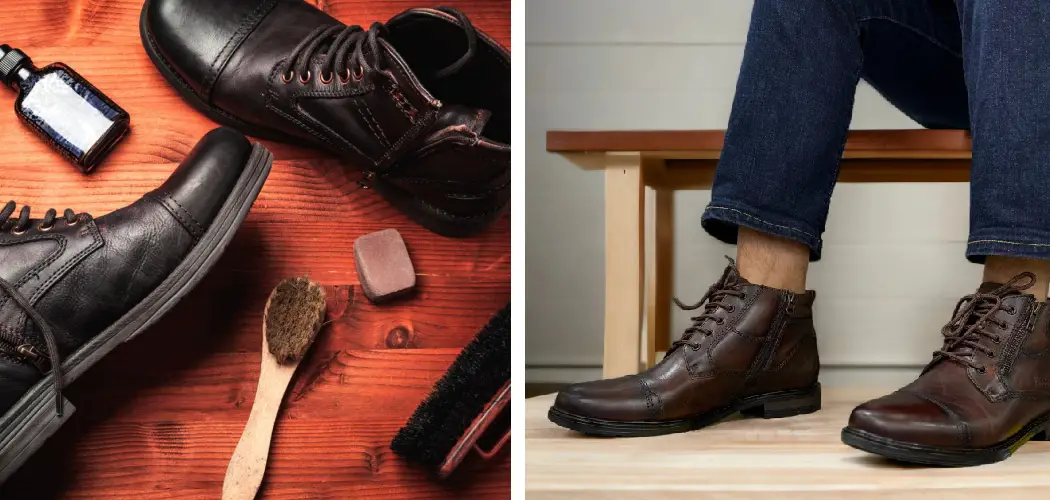Maintaining the pristine appearance and longevity of synthetic leather shoes requires proper cleaning and care. Unlike genuine leather, synthetic leather, often made from materials like polyurethane (PU) or polyvinyl chloride (PVC), has different properties and requires specific cleaning techniques to avoid damage. Synthetic leather shoes are popular for their durability, affordability, and stylish appeal, making them a staple in many wardrobes. However, without regular maintenance, these shoes can quickly accumulate dirt, scuffs, and stains, diminishing their aesthetic appeal.
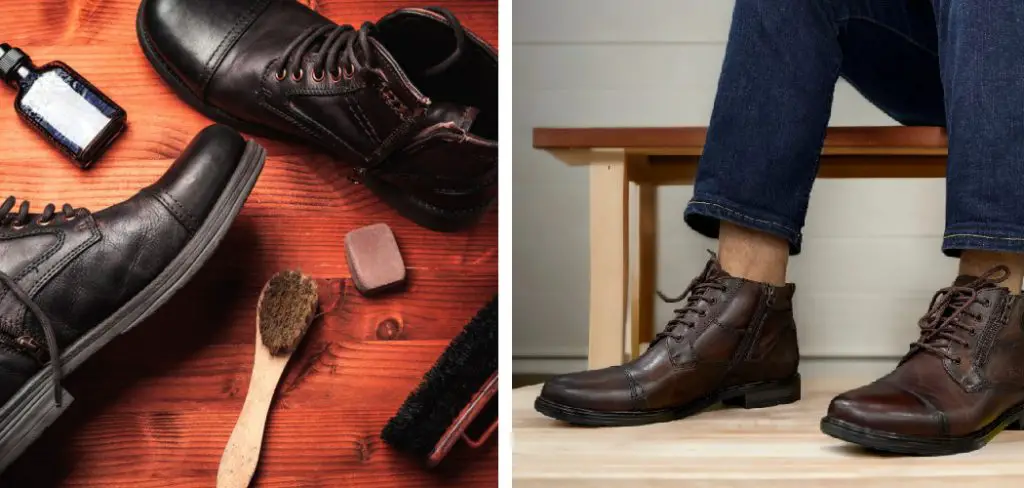
In this guide, we will explore effective methods for how to clean synthetic leather shoes, ensuring they remain in top condition. From everyday cleaning tips to deep-cleaning strategies, we will cover the essential steps and products needed to keep your synthetic leather shoes looking new. Whether you wear them for work, casual outings, or special occasions, proper care will extend the life of your synthetic leather footwear, keeping them stylish and presentable.
Importance of Cleaning and Maintaining Synthetic Leather Shoes
Keeping synthetic leather shoes clean and well-maintained is crucial not only for aesthetic reasons but also to prolong their lifespan. Like any other item in your wardrobe, these shoes face daily exposure to dirt, dust, and possibly harsh environmental conditions, which may lead to the material looking worn out and aged prematurely.
Regular cleaning prevents the buildup of grime and other substances that can degrade the synthetic materials over time, causing them to crack, peel, or lose their original texture and color. Additionally, well-maintained shoes contribute positively to personal hygiene and prevent the development of unpleasant odors. By investing a small amount of time regularly to care for your synthetic leather shoes, you safeguard your investment and ensure that they remain a versatile and attractive part of your attire for various occasions.

Why Proper Cleaning is Important
Proper cleaning of synthetic leather shoes is pivotal for several reasons, impacting both their appearance and longevity.
Firstly, it is essential in preserving the aesthetic appeal and durability of the synthetic leather. Regular, gentle cleaning prevents the accumulation of dirt and dust that, over time, could permanently stain or dull the vibrant finish of the shoes.
Secondly, correct cleaning methods help in preventing damage to the synthetic materials, which can extend the life of your shoes substantially. Using inappropriate cleaning products or techniques might cause the synthetic leather to crack, peel, or degrade, affecting both the look and functionality of the footwear.
Furthermore, maintaining hygiene is another crucial aspect of cleaning synthetic leather shoes. Dirt and stains that accumulate on shoes can harbor bacteria and lead to unpleasant odors, which proper cleaning can eliminate. By removing these impurities, shoes not only look better but also contribute to a healthier environment for your feet. In essence, regular and proper cleaning ensures that your synthetic leather shoes stay attractive, comfortable, and in good condition, serving as a reliable and stylish part of your wardrobe for as long as possible.
Definition and Characteristics of Synthetic Leather
Synthetic leather, also known as faux leather, is a material designed to mimic the appearance and texture of genuine leather but is made from artificial or man-made products. Predominantly, it’s manufactured from two main types of polymers: polyurethane (PU) and polyvinyl chloride (PVC), which are treated and dyed to achieve the desired look and feel. This material has been developed as a cost-effective and ethical alternative to real leather, offering several unique characteristics that distinguish it from its natural counterpart.
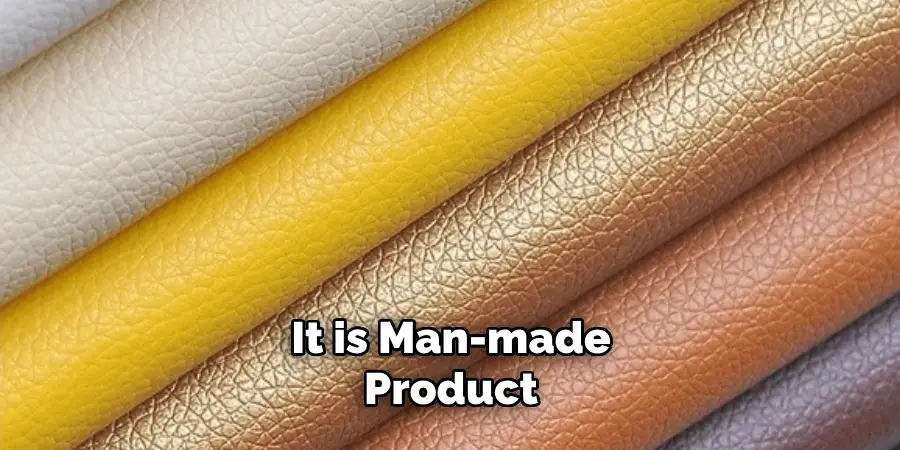
One of the primary advantages of synthetic leather is its durability. Unlike genuine leather, which can age and wear over time, synthetic leather maintains its appearance and structure for longer, resisting cracks and fading. Additionally, it is considerably easier to care for, as it does not require the same level of maintenance as real leather. Synthetic leather is also versatile, available in a wide range of colors, textures, and finishes, making it a popular choice for fashion, footwear, and upholstery.
From an environmental and ethical standpoint, synthetic leather provides a cruelty-free alternative to animal-based products. It caters to the growing demand for vegan and sustainable fashion choices, reducing the impact on wildlife and the environment. However, it’s important to note that the production and disposal of synthetic leather can also carry environmental considerations, depending on the processes and materials used.
Overall, synthetic leather presents a practical and ethical option for those seeking the luxurious look of leather with added durability, variety, and affordability. Its development reflects advances in technology and a shift towards more sustainable and ethical consumer choices.
Types of Synthetic Leather Materials
Synthetic leather, also recognized for its versatility and practicality, is available in different types based on the materials and processes used in its production. Each type offers unique properties and advantages, catering to various applications and consumer needs.
Polyurethane (PU) Leather
Polyurethane leather, or PU leather, is one of the most common types of synthetic leather. This material is created by applying or coating a polyurethane finish on a base layer, often made of polyester, cotton, nylon, or rayon. PU leather is appreciated for its softness, flexibility, and a more realistic leather-like appearance. It is also more environmentally friendly than some other types of synthetic leather, as it doesn’t rely on plasticizers for flexibility, making it a preferred choice for clothing, accessories, and upholstery.
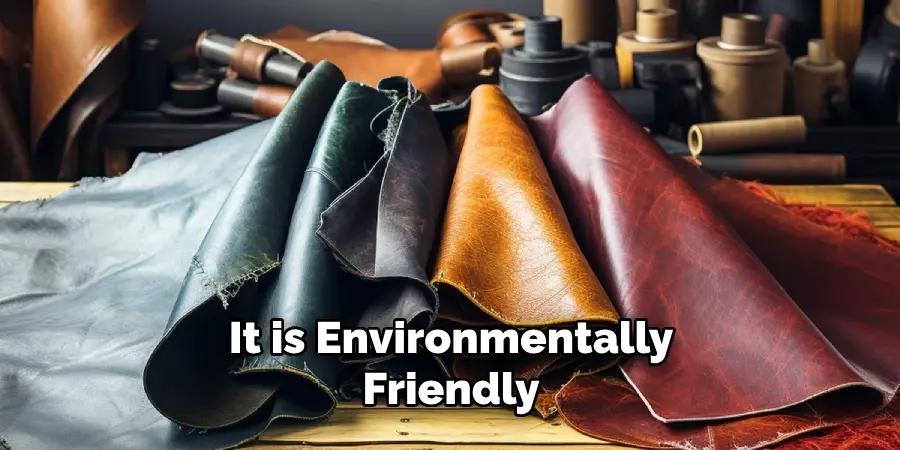
Polyvinyl Chloride (PVC) Leather
Polyvinyl chloride, known as PVC leather or vinyl, is another widely used synthetic leather material. PVC leather is produced by combining polyvinyl chloride with stabilizers (to protect), plasticizers (to soften), and lubricants (to make flexible), then applying to a base material like cotton or polyester. This type of synthetic leather is particularly durable, water-resistant, and easy to clean, making it suitable for products that require a high level of resilience, such as shoes, bags, and furniture upholstery.
Microfiber Leather
Microfiber leather represents a higher-quality type of synthetic leather, made from a combination of microfiber non-woven fabric coated with a high-performance polyurethane layer. Renowned for its exceptional durability, breathability, and resemblance to genuine leather, microfiber leather is considered one of the best synthetic alternatives. It offers excellent tear resistance, uniformity, and environmental friendliness, as it does not contain harmful substances. This material is commonly used in high-end fashion, automotive upholstery, and sporting goods due to its superior qualities.
Silicone Leather
A newer entrant to the synthetic leather market is silicone leather, recognized for its sustainability and eco-friendliness. Made from silicone, a non-petroleum-based polymer, silicone leather is hypoallergenic, vegan, and biodegradable in some formulations. It boasts of remarkable durability, resistance to UV light, water, and stains, making it an excellent choice for outdoor furniture, healthcare environments, and fashion items focused on sustainability.
Each of these synthetic leather materials offers distinct advantages and characteristics, making them suitable for a wide range of applications. From fashion to furniture and beyond, the diversity of synthetic leathers ensures there is an option available to meet nearly any requirement, preference, and ethical consideration.
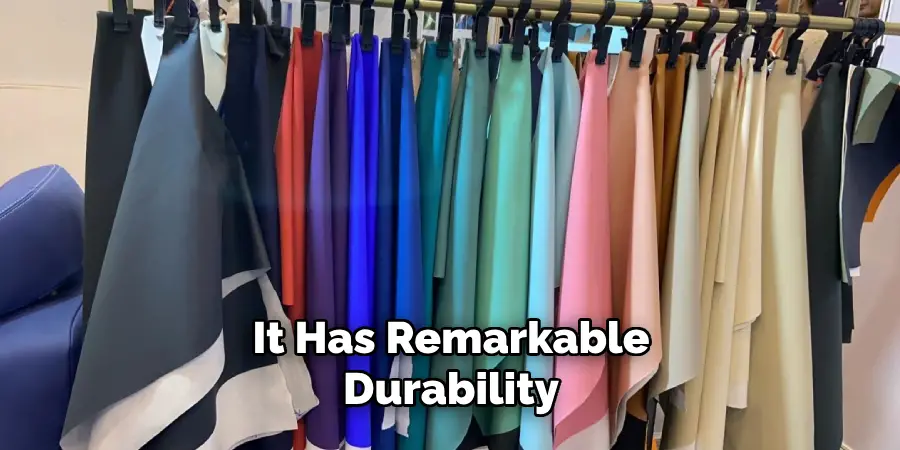
Differences Between Synthetic and Genuine Leather
When comparing synthetic leather to genuine leather, several key differences emerge that influence consumer choices based on needs, values, and preferences. One of the fundamental differences is their origin; while genuine leather is derived from animal hides, synthetic leather is manufactured using polymers such as polyurethane (PU) or polyvinyl chloride (PVC). This distinction not only affects the texture and feel of the material but also its environmental and ethical implications.
Genuine leather is celebrated for its unique texture, natural scars, and an aging process known as “patina,” which adds character over time. In contrast, synthetic leather offers uniformity in appearance but lacks the natural aging and distinct texture that genuine leather provides. This factor can be significant for consumers seeking the authentic aesthetic and tactile experience associated with real leather products.
From a durability perspective, synthetic leather has made significant strides, offering products that are more resistant to stains and water, making them easier to maintain. However, genuine leather is known for its long-lasting durability when properly cared for, often outliving synthetic alternatives and improving in appearance with age.
Environmental and ethical considerations also play a crucial role in differentiating these materials. Genuine leather raises concerns regarding animal welfare and the environmental impact of tanning processes. Conversely, while synthetic leather offers a cruelty-free alternative, it is not without its environmental drawbacks, particularly concerning the use of plastics and potential challenges in recycling.
In terms of cost, synthetic leather tends to be more affordable than genuine leather, reflecting differences in the sourcing of materials and the manufacturing process. This cost-effectiveness makes synthetic leather a popular choice for a wide array of products, from fashion to furniture, without sacrificing style or utility.
10 Methods How to Clean Synthetic Leather Shoes
1. Gentle Surface Cleaning
Start by removing any loose dirt or debris from the surface of your synthetic leather shoes. Use a soft-bristled brush or a dry cloth to gently brush away dirt and dust.
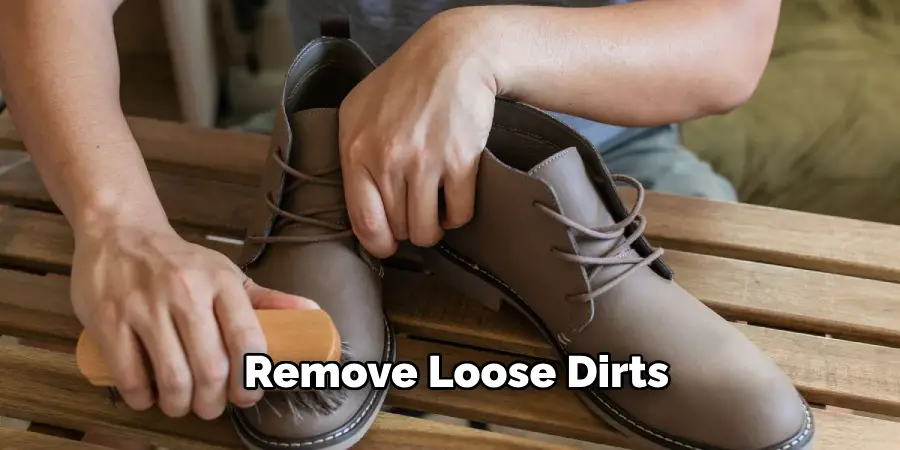
Be thorough but gentle, as aggressive brushing may scratch the surface of the shoes and cause damage. Pay attention to seams, stitching, and any textured areas where dirt may accumulate. This step prepares the shoes for deeper cleaning by removing surface-level contaminants.
2. Prepare a Cleaning Solution
Mix a small amount of mild liquid soap or detergent with warm water to create a cleaning solution. Avoid using harsh chemicals or solvents, as they can damage synthetic leather. Alternatively, you can use a commercial leather cleaner specifically formulated for synthetic materials. Ensure the soap or detergent is fully dissolved in the water to prevent any residue from remaining on the shoes after cleaning. However, do not make the solution too sudsy as it may leave soap marks on the shoes.
3. Test in an Inconspicuous Area
Before applying the cleaning solution to the entire shoe, it’s essential to test it in an inconspicuous area to ensure it doesn’t cause any discoloration or damage to the synthetic leather. Choose a small, hidden spot, such as the inside of the shoe or the back of the heel. Apply a small amount of the cleaning solution to a clean cloth or sponge and gently dab it onto the test area. Wait for the area to dry completely before inspecting for any adverse effects. Though unlikely, if any discoloration or damage occurs, do not use the cleaning solution on the entire shoe.
4. Clean the Shoes
Dip a soft cloth or sponge into the cleaning solution and gently scrub the surface of the synthetic leather shoes. Work in small, circular motions, focusing on one section at a time. Pay extra attention to areas with stains or spots, applying slightly more pressure as needed to lift stubborn dirt or grime. Avoid saturating the shoes with excess water, as synthetic leather is not as porous as genuine leather and can be damaged by excessive moisture. If necessary, use a soft-bristled brush to gently scrub any hard-to-reach areas.
After you have thoroughly cleaned the shoes, rinse off any remaining cleaning solution with a damp cloth or sponge. Make sure to remove all traces of soap or detergent, as they can leave residue and cause discoloration over time.
5. Remove Stains
For stubborn stains that do not respond to gentle cleaning, you may need to use a specialized stain remover designed for synthetic leather. Choose a product that is safe for use on synthetic materials and follow the manufacturer’s instructions carefully. Apply a small amount of the stain remover to a clean cloth or sponge and gently dab at the stain until it begins to lift. Avoid rubbing the stain, as this can spread it further and potentially damage the surface of the shoes.
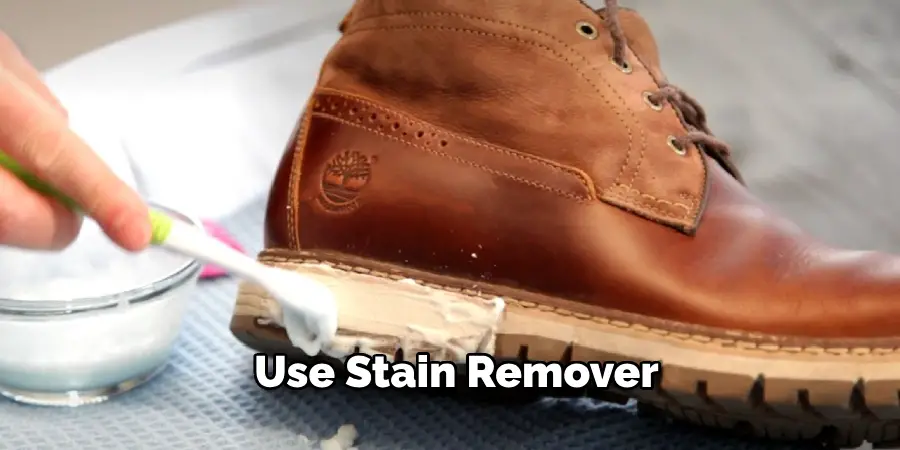
6. Rinse with Clean Water
After cleaning the shoes, rinse off any remaining soap or cleaner with clean water. Use a damp cloth or sponge to wipe away any residue, ensuring all traces of soap are thoroughly removed. Pay attention to seams and crevices where soap residue may hide. Rinse the cloth or sponge frequently to prevent spreading dirt or soap back onto the shoes. Thorough rinsing helps prevent any leftover residue from drying out and leaving a film on the shoes’ surface.
7. Dry the Shoes Properly
Allow the synthetic leather shoes to air dry naturally in a well-ventilated area away from direct sunlight or heat sources. Avoid using a hairdryer or placing them near a heater, as excessive heat can cause the material to crack or shrink. To help the shoes retain their shape as they dry, stuff them with paper towels, newspaper, or a shoe tree. Avoid using materials that may bleed color onto the shoes or leave behind lint or debris.
8. Condition the Shoes
Once the shoes are completely dry, apply a small amount of synthetic leather conditioner to a clean cloth and gently rub it into the surface of the shoes. Conditioning helps keep the synthetic leather soft and supple, preventing it from drying out and cracking over time. Choose a conditioner specifically formulated for synthetic materials and follow the manufacturer’s instructions for best results. Apply the conditioner evenly, paying extra attention to areas that may be prone to drying out, such as the toe box and heel.
9. Polish for Shine (Optional)
If you want to give your synthetic leather shoes a shiny finish, you can use a synthetic leather polish. Apply a small amount of polish to a clean cloth and buff it into the shoes using circular motions. Allow the polish to dry completely before wearing the shoes. Synthetic leather polish is available in a variety of colors to match your shoes, or you can choose a neutral polish for a more versatile option. Buffing the shoes after applying the polish helps create a smooth, glossy finish that enhances their appearance.
10. Store Properly
To keep your synthetic leather shoes looking their best between wears, store them properly. Choose a cool, dry place away from direct sunlight and moisture, as prolonged exposure to heat and humidity can cause the material to degrade over time. Avoid stacking or crushing the shoes, as this can cause them to lose their shape. Consider using shoe bags or boxes to protect them from dust and dirt, and insert shoe trees to help them maintain their shape. Proper storage helps prolong the life of your synthetic leather shoes and ensures they’re ready to wear whenever you need them.
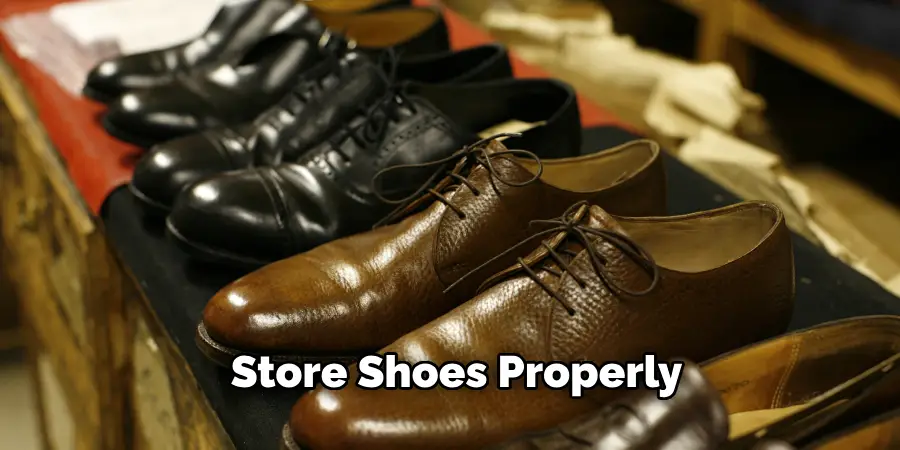
Conclusion
Caring for synthetic leather shoes involves a series of straightforward steps that ensure their longevity and maintain their aesthetic appeal. By adopting a mindful approach to cleaning, conditioning, and storing your synthetic leather footwear, you can significantly extend their lifespan while keeping them looking as good as new.
Remember to regularly clean and condition your shoes, tackle stains promptly, and store them in an appropriate environment to prevent damage. With a little time and effort, your synthetic leather shoes can serve as a durable and stylish part of your wardrobe for years to come. Thanks for reading, and we hope this has given you some inspiration on how to clean synthetic leather shoes!

